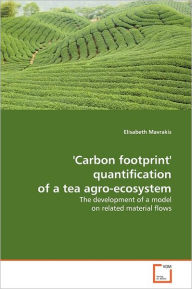'Carbon Footprint' Quantification Of A Tea Agro-Ecosystem
by Elisabeth Mavrakis
2020-05-06 18:01:58
'Carbon Footprint' Quantification Of A Tea Agro-Ecosystem
by Elisabeth Mavrakis
2020-05-06 18:01:58
Climate change is one of the major challenges of the 21st century and in fact, it is the developing countries that are affected most by the inherent impacts. 'Farmers have custody of more environment than does any other group' (Paarlberg, 1980). Sinc...
Read more
Climate change is one of the major challenges of the 21st century and in fact, it is the developing countries that are affected most by the inherent impacts. 'Farmers have custody of more environment than does any other group' (Paarlberg, 1980). Since agriculture is the mainstay of 75 percent of the developing world's poor and in the context of climate change, this sector plays a particular role being able to function as both, a sink and a source of GHG emissions. Therefore, it is quite amazing that agriculture is not adequately considered as a potential field to enhance climate change mitigation, in fact. Tea is one of the most important foreign exchange earners that is especially cultivated by smallholders in developing countries. In consequence of the very particular inherent management practices several studies indicate a high CO2 sequestration capacity of tea plantations. This study elucidates the particular carbon flows of a tea ecosystem amplifying the most important plant and soil parameters. Moreover, it designs a carbon model comprising the simulation of several scenarios and different climate change predictions.
Less







 of the Southern Rocky Mountain Region.png)



 in Northeastern Kansas.jpg)











 From Colorado.png)






